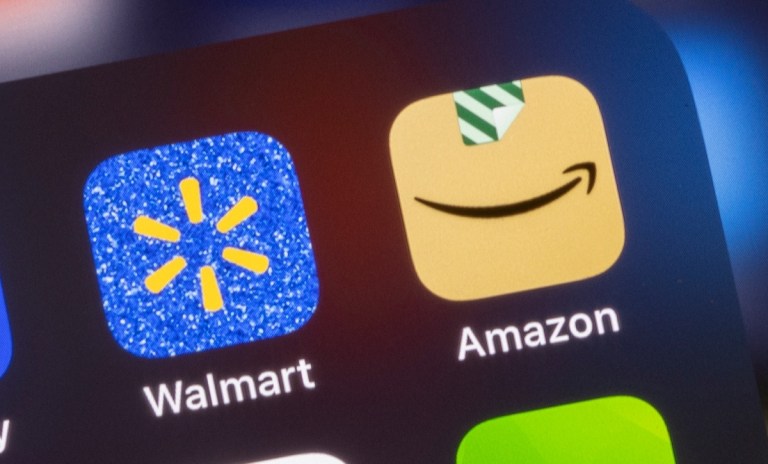
With consumers increasingly expecting to be able to pay however they want, Walmart and Amazon are adding new payment options.
Walmart is working with Fiserv to provide real-time pay-by-bank options, with the transaction reflected in customers’ bank account balances immediately. The move marks an improvement on the retailer’s previous pay-by-bank test wherein the transaction would take days to finalize.
Consumers are seeking payment options that allow them to play it safe with their finances to not exceed their means. PYMNTS Intelligence found that consumers experiencing financial pressures disproportionately reach for their debit cards over their credit cards. Further PYMNTS Intelligence research from the study “The Last Transaction: Examining Recent Shifts in Purchasing Behaviors,” which drew from a survey of more than 2,600 U.S. consumers earlier this year, revealed that younger generations are favoring debit more than their older counterparts.
Plus, consumers are specifically interested in pay-by-bank (also known as account-to-account [A2A] payment) options. The report “Tracking the Digital Payments Takeover: Consumer Familiarity Controls Account-to-Account Payment Growth” revealed that 36% of U.S. consumers had made an A2A payment within the last three months as of summer 2023. Plus, 96% of A2A payment adopters were at least somewhat satisfied with the experience, and most of them were very or extremely satisfied.
Amazon, too, is providing consumers with more ways to pay, having integrated PayPal as an option for its Buy with Prime program, which enables consumers to reap the benefits of their Prime memberships with select merchants outside of Amazon’s own marketplace. The eCommerce behemoth also expanded its in-store payments presence, licensing out its Just Walk Out frictionless checkout technology to more locations.
These moves come as consumers demand greater payment choices. Three-quarters of consumers cited the ability to use their preferred payment method as a desirable feature when shopping, per PYMNTS Intelligence’s 2024 Global Digital Shopping Index. The study found that this was the most highly in-demand offering from merchants.
In the eCommerce sphere, 70% of consumers said the availability of their preferred payment method is highly influential in determining where they shop, per the PYMNTS Intelligence report “How Preferred Payment Availability Can Reduce Cart Abandonment.”
“Whatever calculus the user performs to determine the payment methods that they want to use, they want more options across more merchants,” Drew Olson, senior director at Google Pay, said in a December interview with PYMNTS,
Walmart’s real-time pay-by-bank innovation and Amazon’s integration of PayPal into its Buy with Prime program reflect a growing trend toward providing consumers with the financial tools they prefer. Consumers are increasingly prioritizing the ability to pay in ways that align with their financial habits, whether it’s opting for debit over credit or choosing convenience-driven technologies like frictionless checkout. In this new era of retail, the ability to offer payment choices is not just a perk — it is a necessity for staying competitive and maintaining customer loyalty.